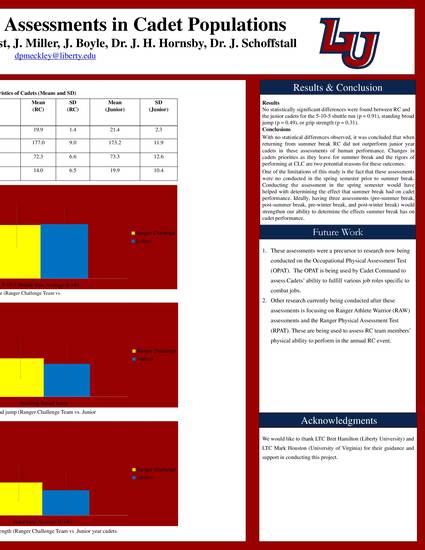
This study assessed potential physiological differences between the Ranger Challenge (RC) Competition team and junior year cadets in an Army Reserve Officer Training Corps (ROTC) program. The method included: RC (m = 11, f = 2) and junior year cadets (m = 7, f = 3) were assessed in the following areas: 1) quickness and agility (5-10-5 shuttle run), 2) total-body power (standing broad jump), and 3) grip strength (hand grip dynamometry) assessed. The 5-10-5 shuttle run was performed twice (opening once to the left and once to the right). The standing broad jump required that cadets stand with their toes behind a line, perform a maximum of three preparatory movements, triple extend their knees, hips, and ankles while using their upper body to propel them as far forward as possible. After the jump the distanced reached was measured from the line to the heel of the nearest foot. Hand grip dynamometry was performed once on each hand. The cadet held the dynamometer out to his or her side and squeezed it as they lowered it to their hip. The results were that there were no significant differences between groups for the 5-10-5 shuttle run (p = 0.91), standing broad jump (p = 0.49), or grip strength (p = 0.31). RC did not outperform.
Available at: http://works.bepress.com/james-schoffstall/2/
